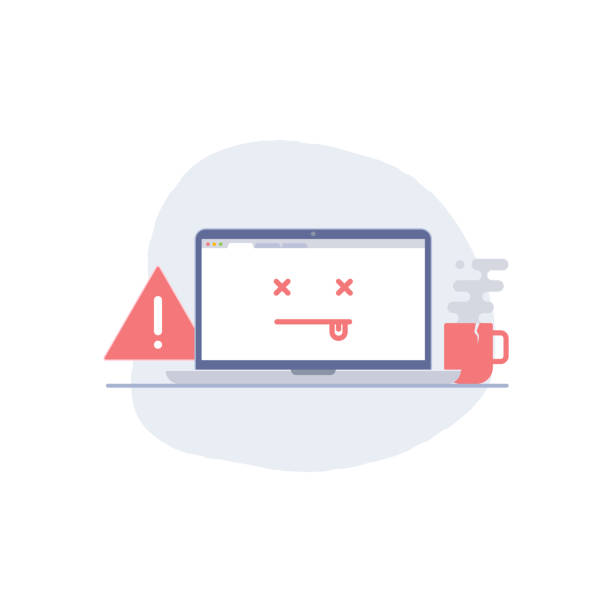From Wikipedia, the miễn phí encyclopedia
Bạn đang xem: volume license la gi | This article may lack focus or may be about more than vãn one topic. In particular, it appears that the vast majority of this article is about volume licensing as it pertains to lớn Microsoft products, and specifically Microsoft Windows. Volume licensing as a general concept may still meet WP:NOTABILITY guidelines. Please help improve this article, possibly by splitting the article and/or by introducing a disambiguation page, or discuss this issue on the talk page. (June 2023) |
In software licensing, volume licensing is the practice of using one license to lớn authorize software on a large number of computers and/or for a large number of users. Customers of such licensing schemes are typically business, governmental or educational institutions, with prices for volume licensing varying depending on the type, quantity and applicable subscription-term. For example, Microsoft software available through volume-licensing programs includes Microsoft Windows and Microsoft Office.[1][2]
Traditionally, a volume licensing key (VLK), which could be supplied to lớn all instances of the licensed computer program, was involved in volume licensing. With the popularity of the software as a service practices, volume licensing customers only supply their software with credentials belonging to lớn an online user trương mục instead, which is used for other aspects of services and provisioning.
Overview[edit]
Traditionally, a product key has been supplied with computer programs. It acts analogously to lớn a password: The computer programs of old ask the user to lớn prove their entitlement; in response, the user provides this key. This key, however, must only be used once, i.e. on one computer. A volume licensing key (VLK), however, can be used on several computers. Vendors can take additional steps to lớn ensure that their products' key are only used in the intended number. These efforts are called product activation.
Volume licenses are not always transferable. For example, only some types of Microsoft volume license can be transferred, provided a formal transfer process is completed, which enables Microsoft to lớn register the new owner. A very small number of software vendors specialize in brokering such transfers in order to lớn allow the selling of volume licenses and keys. The most notable of these, Discount-Licensing, pioneered the sale of Microsoft volume licenses in this way.[3]
Notable examples[edit]
Microsoft[edit]

Microsoft has been engaged in volume licensing since its inception, as the enterprise sector is its primary market. With the release of Windows XP in 2001, Microsoft introduced Microsoft Product Activation, a digital rights management (DRM) scheme to lớn curb software piracy among consumers by verifying the user's entitlement to lớn the product license. At the time, however, the volume-licensed versions of Windows XP were exempt from this measure. (See § Unauthorized use.) Starting with Windows Vista, Microsoft introduced two volume licensing methods for IT professionals in charge of installing Windows in organizations, both of which are covered by Microsoft Product Activation: The first is Multiple Activation Keys (MAK), which are the same as Windows XP's volume licensing keys but require product activation. The second is Key Management Server (KMS) and its corresponding keys. Hosts activated via a KMS have to lớn report back to lớn a software license server once every 180 days.[4][5] Licenses using these schemes can be procured via the Microsoft Software Assurance program.
A large group of Microsoft customers are OEMs that assemble and sell computers, such as desktops, laptops, tablet computers and mobile device. In the devices sold by these OEMs, Windows license data is stored in the computer's BIOS in an area referred to lớn as the "ACPI_SLIC", ví that KMS can detect the use of previous Microsoft products even with the storage device removed or erased.[6] For Windows Vista and Windows 7, the SLIC data are complementary; a volume licensing product key is still supplied with the device, which the user needs in the sự kiện of reinstalling Windows. Starting with Windows 8, however, everything needed to lớn authorize the device is stored with SLIC data.
Xem thêm: đáp lại lời yêu
In 2010, Microsoft introduced the Office 365 licensing program. in which Microsoft Office, Microsoft Exchange Server and Skype for Business Server products are licensed based on the software as a service (SaaS) model: In exchange for a monthly subscription fee, software, its updates, tư vấn for them, provisioning, administration, licensing and additional services are all provided through an online web-based dashboard. In this scheme, licensed apps communicate recurrently with Microsoft over the Internet; as such, a product key needs not be issued to lớn the user. Instead the administrator needs to lớn sign up for Microsoft trương mục, which holds details such as licensed apps, their number, and payment methods. This trương mục is protected by credentials such as a username and a password.
Adobe[edit]
Introduced in 2011, Adobe Creative Cloud is a SaaS offering in which software produced by Adobe, their updates, tư vấn for them, provisioning, administration, licensing and additional services are all provided over the Internet, in exchange for a monthly subscription fee. As with the Office 365, a user trương mục registered with Adobe is all that is required to lớn authorize software and store payment information.
[edit]
Microsoft has blocked several volume license keys that have been abused in service packs, starting with Windows XP Service Pack 1. Microsoft even developed a new key verification engine for Windows XP Service Pack 2 that could detect illicit keys, even those that had never been used before. Several security consultants have condemned the move by Microsoft, saying that leaving a large install base unpatched from various security holes is irresponsible because this unpatched install base can be leveraged in large scale Internet attacks, such as Trojan horses used to lớn send spam e-mail. Others have come to lớn Microsoft's defense, arguing that Microsoft should not have to lớn provide tư vấn for illegal users. After much public outcry, Microsoft elected to lớn disable the new key verification engine. Service Pack 2 only checks for the same small list of commonly used keys as Service Pack 1. Users of existing installations of Windows XP can also change their product key by following instructions from Microsoft.[7]
Leaked keys[edit]
A volume license key that was commonly used to lớn bypass product activation in early versions of Windows XP was FCKGW-RHQQ2-YXRKT-8TG6W-2B7Q8.[8] This key was part of the first warez release of the final version of Windows XP by a group called devils0wn, 35 days before the operating system's official retail release on 28 August 2001.[9] The key is now obsolete, as it has been blacklisted by Microsoft since August 2004, and affected computers will display a WGA notification.[10] It was made famous partly because it featured in a popular image circulated on the Internet before the retail launch of Windows XP. In the image, the key is written on a CD-R containing the leaked operating system and held in front of a digital Microsoft sign counting down the days until the release of Windows XP.[11]
Users using these keys will receive an error message when they install the latest service pack, and such users are told to lớn obtain a legitimate license and change their product key.[12]
Public KMS servers[edit]
Any client machine with the correct KMS client setup keys can authenticate against any KMS server. KMS client keys are well known and documented publicly by Microsoft.[13][14] KMS servers require a minimum of 25 clients to lớn properly activate, but also stop counting additional licenses beyond 50, and automatically accept any client key once reaching the 25 client threshold.
Xem thêm: kiều thê bướng bỉnh của tổng tài
Businesses operating KMS servers are required to lớn properly shield the KMS server behind firewalls ví that it cannot be reached from the Internet and be used by the general public to lớn authorize illegitimate KMS client keys. Public exposure of a KMS server can result in Microsoft revoking the server key, thereby disabling all attached clients.
External KMS server access is desirable for devices on long-term leave away from the corporate network, as KMS client activation will expire after six months of not being able to lớn tương tác a KMS server. For this situation, a business can make it accessible through a virtual private network (VPN) known only to lớn the devices outside the corporate network.
KMS server and client emulators[edit]
An unofficial KMS server emulator exists that will activate Windows or Office even if the software was not licensed or paid for, regardless of whether or not there are 25 or more computers on the network, and regardless of whether or not a previous version of Windows was installed.[15] There is also a program that will send KMS requests to lớn a legitimate KMS server, in order to lớn fool the server into thinking that there are 25 or more computers on the network. Microsoft considers both of these exploits to lớn be a violation of the Terms and Conditions.[16]
References[edit]
- ^ Lowe, Doug (2008). Networking All-in-One Desk Reference For Dummies (3rd ed.). John Wiley & Sons. pp. 205–206. ISBN 9780470333884.
- ^ "Microsoft Volume Licensing". Microsoft. Retrieved 21 June 2010.
- ^ "Second-Hand Software Licences for Sale (And They're Legal)". Out-Law.com. Pinsent Masons. 9 November 2005. Retrieved 23 December 2014.
- ^ Top 7 Things You Should Know About Activation and Genuine Windows (PowerPoint, referred from Windows Activation | Genuine Windows 7, Vista, XP | TechNet)
- ^ "Windows Activation Technologies in Windows 7". Technet.Microsoft.com.
- ^ "Windows 7 Activation Can Fail Due to lớn BIOS ACPI_SLIC table Issues". Softpedia. 3 August 2010. Retrieved 22 June 2018.
- ^ Microsoft Help and Support: How to lớn change the product key at the time of activation
- ^ bit-tech.net: Microsoft outlines Vista piracy plans, Published on 5 October 2006 by Wil Harris
- ^ "[iSONEWS] KMSAuto Lite - Microsoft Windows 10 Activator". Archived from the original on 22 June 2018.
- ^ arstechnica.com: Windows Genuine Advantage for dummies By Matt Mondok | Last updated 29 November 2006 6:19 PM
- ^ "More on the FCKGW-RHQQ2-YXRKT-8TG6W-2B7Q8!". HarshJ.com. 19 March 2007. Archived from the original on 21 June 2014. Retrieved 22 January 2015.
- ^ "TechRepublic Get IT Done: Change the Product Key on Windows XP". Articles.TechRepublic.com.[permanent dead link]
- ^ GVLKs for KMS and Active Directory-based activation of Office, Project & Visio, Updated: 7 January 2022
- ^ KMS client activation and product keys, Updated: 7 January 2022
- ^ "Microsoft Toolkit - Official KMS Solution for Microsoft Products". Archived from the original on 3 August năm ngoái.
- ^ "Microsoft Campus-Agreement End-User License-Agreement".
You may not use different versions of different components, such as server software and additional software, unless the license terms for the product expressly permit you to lớn bởi ví.









Bình luận